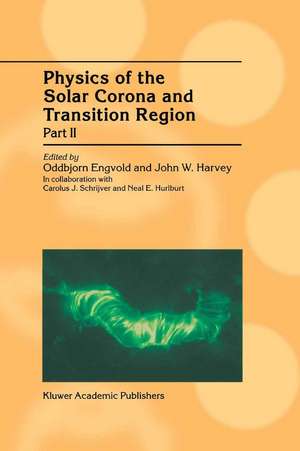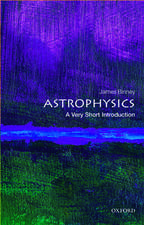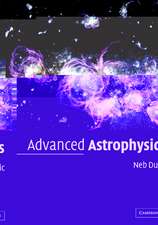Physics of the Solar Corona and Transition Region: Part II Proceedings of the Monterey Workshop, held in Monterey, California, August 1999
Editat de Oddbjorn Engvold, John W. Harvey, C.J. Schrijver, Neal E. Hurlburten Limba Engleză Paperback – 4 oct 2012
| Toate formatele și edițiile | Preț | Express |
|---|---|---|
| Paperback (2) | 1056.24 lei 38-44 zile | |
| SPRINGER NETHERLANDS – dec 2010 | 1056.24 lei 38-44 zile | |
| SPRINGER NETHERLANDS – 4 oct 2012 | 1221.69 lei 6-8 săpt. | |
| Hardback (2) | 1227.84 lei 6-8 săpt. | |
| SPRINGER NETHERLANDS – 30 iun 2001 | 1227.84 lei 6-8 săpt. | |
| SPRINGER NETHERLANDS – 31 iul 2000 | 1233.06 lei 6-8 săpt. |
Preț: 1221.69 lei
Preț vechi: 1489.87 lei
-18% Nou
Puncte Express: 1833
Preț estimativ în valută:
233.80€ • 253.87$ • 196.39£
233.80€ • 253.87$ • 196.39£
Carte tipărită la comandă
Livrare economică 22 aprilie-06 mai
Preluare comenzi: 021 569.72.76
Specificații
ISBN-13: 9789401038461
ISBN-10: 9401038465
Pagini: 392
Ilustrații: V, 392 p.
Dimensiuni: 155 x 235 x 25 mm
Greutate: 0.56 kg
Ediția:2001
Editura: SPRINGER NETHERLANDS
Colecția Springer
Locul publicării:Dordrecht, Netherlands
ISBN-10: 9401038465
Pagini: 392
Ilustrații: V, 392 p.
Dimensiuni: 155 x 235 x 25 mm
Greutate: 0.56 kg
Ediția:2001
Editura: SPRINGER NETHERLANDS
Colecția Springer
Locul publicării:Dordrecht, Netherlands
Public țintă
ResearchCuprins
Three-Dimensional Separator Reconnection — How Does It Occur?.- The Structure of Force-Free Magnetic Fields.- Models of Dynamic Coronal Loops.- Cross-Sectional Properties of Coronal Loops.- Width Variations along Coronal Loops Observed by TRACE.- How Accurately Can We Determine the Coronal Heating Mechanism in the Large-Scale Solar Corona?.- SERTS-97 Measurements of Relative Wavelength Shifts in Coronal Emission Lines across a Solar Active Region.- Modeling Coronal Loop Abundances: Effects of Parameter Variations on Observables.- Waves and Oscillations in the Corona.- Can Gravitational Effects Damp Alfvén Waves?.- Observations of the 24 September 1997 Coronal Flare Waves.- Structure of a Large Low-Latitude Coronal Hole.- Electro-Mechanical Coupling between the Photosphere and Transition Region.- The Magnetic Connectivity of Moss Regions.- Magnetic Activity Associated with Radio Noise Storms.- A Kinetic Model of Coronal Heating and Acceleration by Ion-Cyclotron Waves; Preliminary Results.- SECIS: The Solar Eclipse Coronal Eclipse Imaging System.- The SOHO-Stellar Connection.- New Boundary Integral Equation Representation for Finite Energy Force-Free Magnetic Fields in Open Space above the Sun.- Synoptic Maps of Solar Wind; Comparison of IPS Data and the NOAA/SEC Version of the Wang and Sheeley Model.- Topology of Magnetic Field and Coronal Hearing in Solar Active Regions. II. The Role of Quasi-Separatrix Layers.- Recent Theoretical Results on Coronal Heating.- MACS for Global Measurement of the Solar Wind Velocity and the Thermal Electton Temperature during the Total Solar Eclipse on 11 August 1999.- Multi-Wavelength Observations of the 1998 September 27 Flare Spray.












